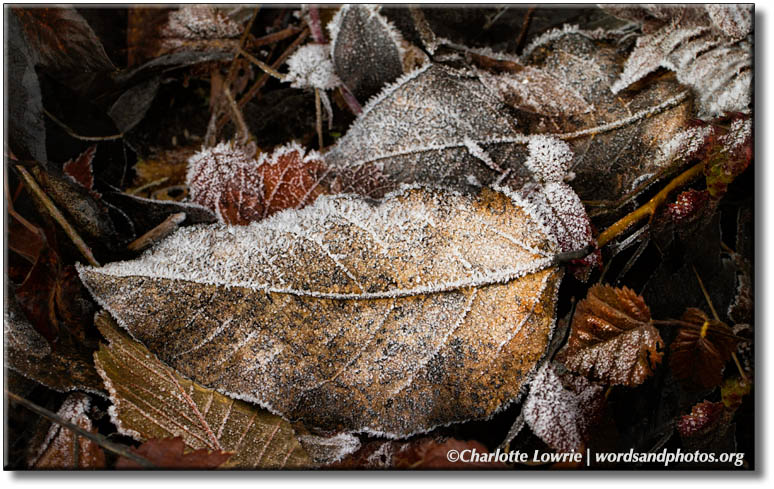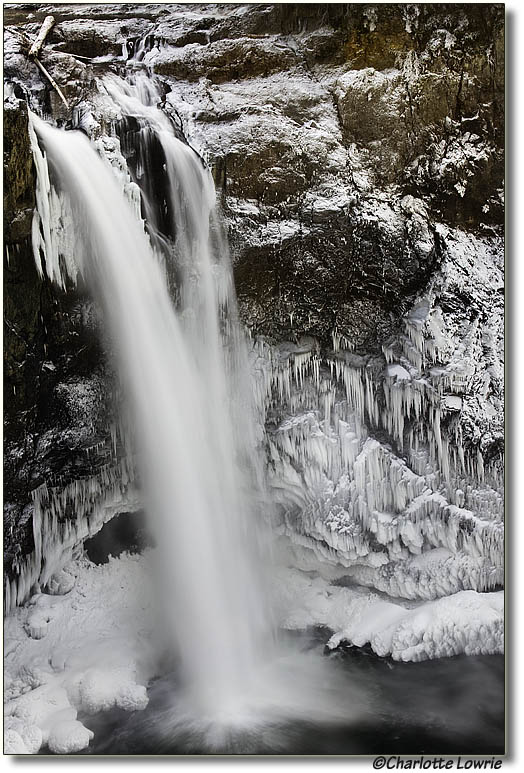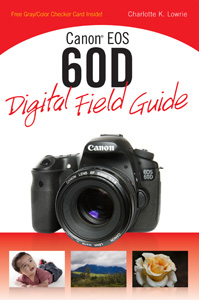By Charlotte Lowrie
With the start of a new year, everyone is interested in improving
their work. And with photography, working to improve is always more
fun than work. With that in mind, here are some of my top suggestions for moving your photography to
a higher level this year.

- Get it right in the camera. All too often, I am in either a real or a self-imposed hurry, and I’ll take shortcuts that cost me time
later during image editing. When I take a shortcut often enough that
it consistently costs me time during editing, I know that I have to slow down during shooting. It pays to get it – everything – right
in the field. For example, if you’re tired of cloning out or cropping out distractions, then
devote more time to finding a shooting position that excludes as many distractions as possible. Are your image exposures problematic? Then take time to learn how to get the exposure right. Learn the exposure and metering controls
available on your camera and how to use them. Then go practice what you’ve learned. Learning without practice is tenuous, and it becomes more tenuous the longer
you wait to put what you've learn into practice.
As I’ve mentioned in another article,
the histogram is the single best tool you have to ensure that you nail the exposure in the field. For example, I shoot RAW capture, and on my 7D, I have found that a positive 1/3-stop of Exposure Compensation will help give me consistently good right-biased exposures in overcast and shady light. By testing this and determining the best setting, I now spend less time during RAW image conversion.
Every shooting session presents a set of limitations for the photographer. Do not let these limitations become a litany of excuses for
not getting the best images you can. Instead, try to find solutions
to overcome the challenges.

- Decide to move your photography to the next level. The “next” level
is different for everyone. First, it’s important to accurately identify where your
skills are now. One way to do that is to review your best shots from last year. Then list the strengths and weaknesses of the images. This type of review requires a cool, dispassionate eye. If you
can't take an emotional step back from your work, then ask friends who are familiar with photography to
review the images. Next, find photographers you admire who shoot better images than you currently shoot. Then
evaluate the differences among their shots and yours. The
differences are the areas that you will work on for the next few
months or even longer.
Very often, photographers think that they will make better
pictures with better gear. I can tell you from experience, that gear is seldom the difference between
pedestrian and professional images. And to make this point abundantly clear, consider how many outstanding iPhone pictures are being made. Most often the difference is
the amount of time experienced photographer spend envisioning and
setting up to make the image.
- Choose interesting subjects or make subjects interesting.
Look for subjects that have a story,
subjects that will resonate with many people, subjects that have
visual impact...in short, look for interesting subject. Once you
have an interesting subject, be the photographer who pays attention
to creating a story, provides interesting background context, waits for the best light, and gets the best and most evocative exposure.
And don't overlook simple subjects.
Simple subjects can be either simple and dull, or simple and beautiful. It’s up to the photographer. One example
of a very simple subject is a music CD cover of three pears
shot on a white seamless background with edgy light. This is a fine example of a
beautifully rendered yet simple subject.
- Learn. It’s that simple — keep learning. Part of the
fun of photography is that there is always something new to learn. Keep yourself challenged and excited about taking the next step in photography. There are thousands of
photography books, courses, workshops, videos, and chat rooms where you can constantly learn.
I teach four courses at BetterPhoto.com. And I have many books on Canon cameras that you can order. But there are thousands of courses and books, so get the ones that suit you best, and enjoy expanding your photographic skills and thinking.
-
 Use your camera phone…often. The simplicity of the camera phone is liberating and fun.
The camera phone forces you to forget about camera buttons and controls and lets you
discover new and unexpected subjects and stories. Then do a quick
edit of the image with any of hundreds of apps. I use a few apps for my iPhone pictures including Nik Software’s Snapseed. Use your camera phone…often. The simplicity of the camera phone is liberating and fun.
The camera phone forces you to forget about camera buttons and controls and lets you
discover new and unexpected subjects and stories. Then do a quick
edit of the image with any of hundreds of apps. I use a few apps for my iPhone pictures including Nik Software’s Snapseed.
- Get out of your comfort zone.
If you most often shoot portraits or still life subjects,
then go out on Saturday and photograph kids at the skate park or
photograph a local ball game. Or if you normally shoot action, then
set up and make some artistic food shots. Do whatever it takes to
get out of your routine to shoot and think different ways. Chances
are good that you'll come back to your routine shooting a little
sharper and with some new ideas.
- Connect with other photographers. By its very nature, shooting is
often a one-person endeavor. While I’ve worked with other photographers, I most often
work alone. Working alone gives me a wonderful time to be in the zone.
This is when time stands still as I explore the subject, find new
approaches, and challenge myself to make an interesting images. But
it's also important to see what other photographers are shooting and to learn what they are thinking
and doing. So I stay connected with other photographers through FaceBook
and Google+. There are many active photography groups on Flickr,
FredMiranda.com, and dpreview.com.
I hope that these suggestions are helpful. If you have other ideas or questions, feel free to e-mail me at charlotte@ wordsandphotos.org.
Related articles:
Related online courses:
|

